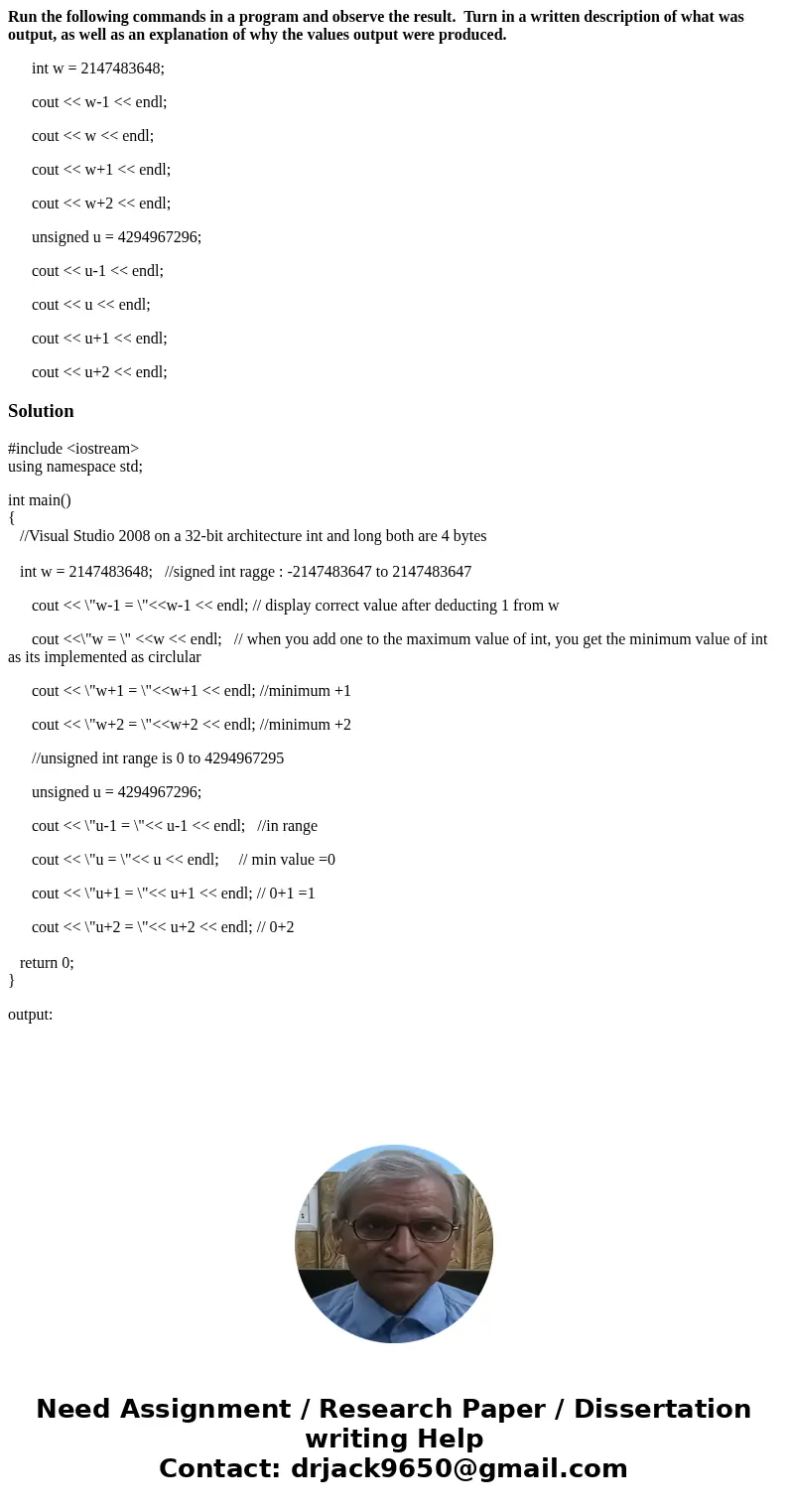Run the following commands in a program and observe the resu
Run the following commands in a program and observe the result. Turn in a written description of what was output, as well as an explanation of why the values output were produced.
int w = 2147483648;
cout << w-1 << endl;
cout << w << endl;
cout << w+1 << endl;
cout << w+2 << endl;
unsigned u = 4294967296;
cout << u-1 << endl;
cout << u << endl;
cout << u+1 << endl;
cout << u+2 << endl;
Solution
#include <iostream>
using namespace std;
int main()
{
//Visual Studio 2008 on a 32-bit architecture int and long both are 4 bytes
int w = 2147483648; //signed int ragge : -2147483647 to 2147483647
cout << \"w-1 = \"<<w-1 << endl; // display correct value after deducting 1 from w
cout <<\"w = \" <<w << endl; // when you add one to the maximum value of int, you get the minimum value of int as its implemented as circlular
cout << \"w+1 = \"<<w+1 << endl; //minimum +1
cout << \"w+2 = \"<<w+2 << endl; //minimum +2
//unsigned int range is 0 to 4294967295
unsigned u = 4294967296;
cout << \"u-1 = \"<< u-1 << endl; //in range
cout << \"u = \"<< u << endl; // min value =0
cout << \"u+1 = \"<< u+1 << endl; // 0+1 =1
cout << \"u+2 = \"<< u+2 << endl; // 0+2
return 0;
}
output:

 Homework Sourse
Homework Sourse